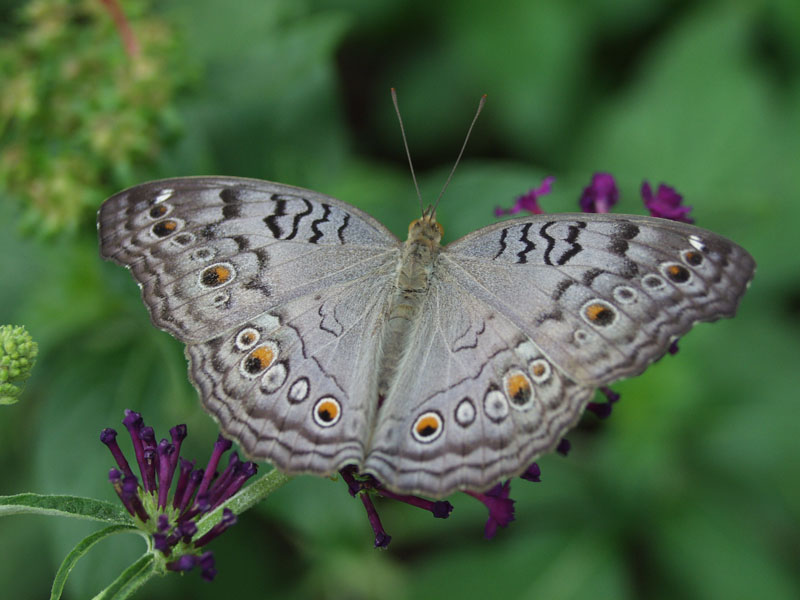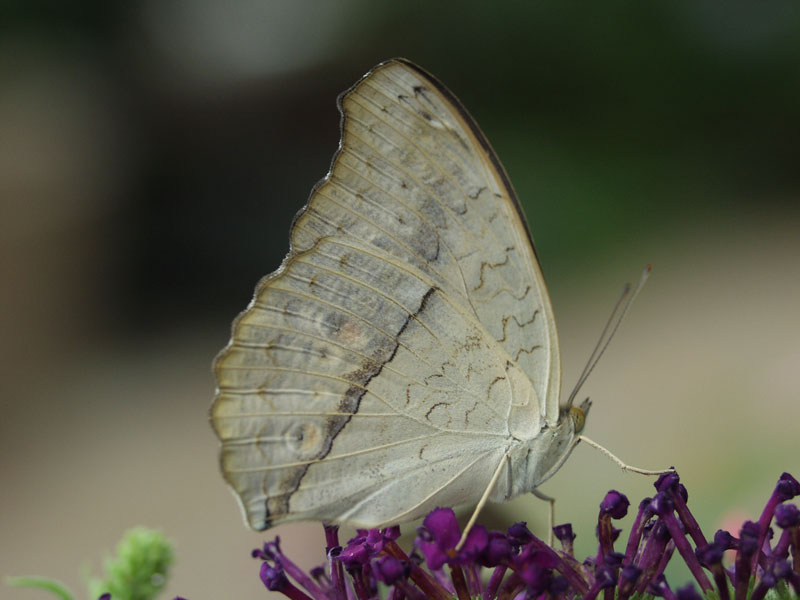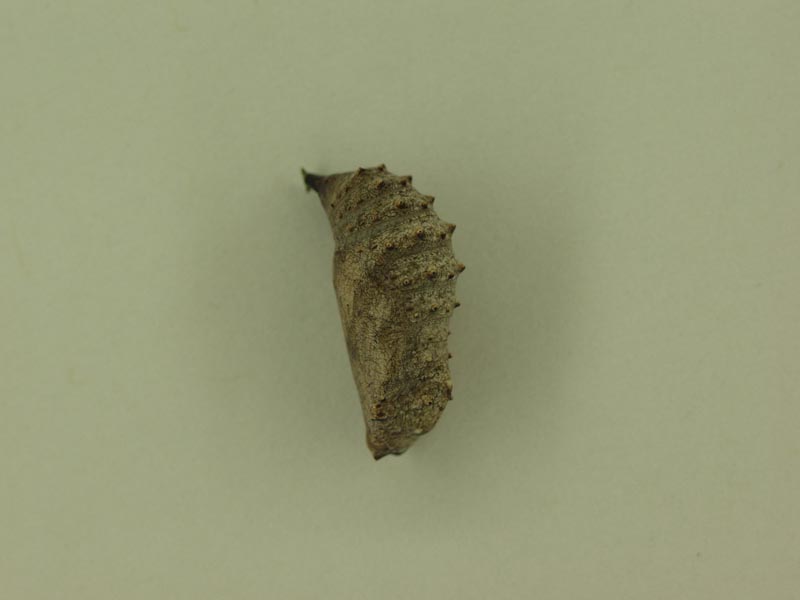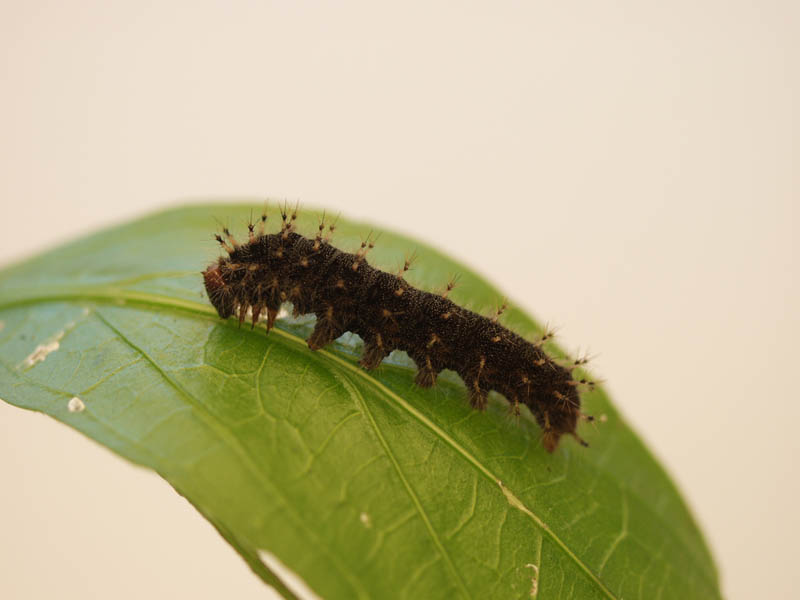



The adults of the Grey Pansy feed on a variety of nectaring flowers. Because of their size they prefer smaller flowers such as Lantana.
Junonia origin is currently unknown. Atlites origin is currently unknown.
The Grey Pansy is commonly found in villages and is commonly seen flying along forest edges. Areas with large amounts of water, such as rice fields and marshy areas, are popular.
Mated females lay their eggs on the host plants. The larvae feed on the host plants which are usually located near larger amounts of water. The larvae avoid rising water by taking the high ground.
There are multiple broods each year, this makes it possible to find the Grey Pansy all year round. The Grey Pansy are known to participate in a migratory flight.
The Grey Pansy comes in two different forms. These forms are broken up into wet and dry season forms. The outsides of the wings in the dry season form are considerably paler than the wet season form.